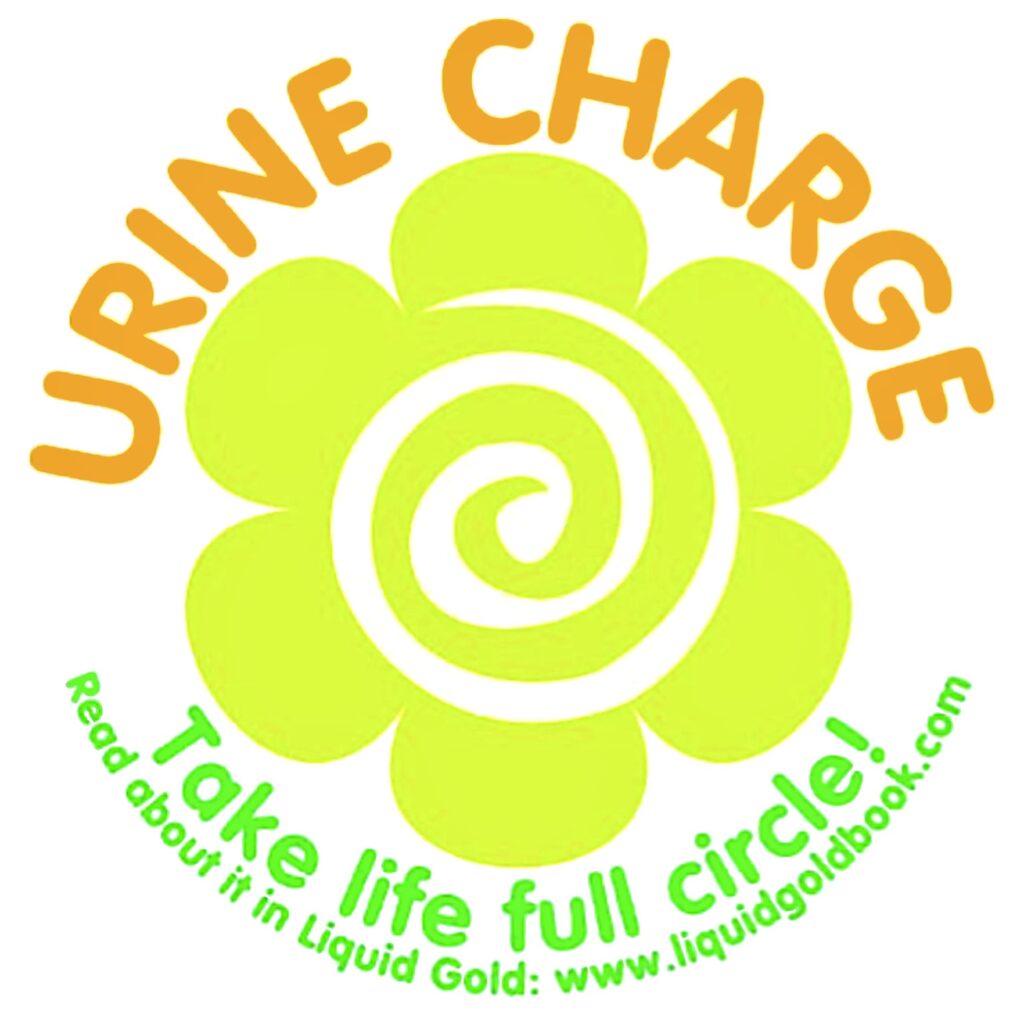In just two days, it’s time for everyone’s favorite holiday — Pee-on-Earth Day!
When you flush your urine down the toilet, you use a gallon or more of drinking water. From there, your urine enters the stream of wastewater, typically joining human feces to be processed in a wastewater treatment plant or a septic system. By treating urine like feces, our society wastes clean water and energy (energy to purify the drinking water, and energy to run the wastewater treatment plant).
Here in the northern hemisphere, human urine doesn’t spread pathogens. And human urine actually makes a pretty good fertilizer, for plants that want a lot of nitrogen. So instead of flushing urine away, you can spread it directly on plants, although urine is such a concentrated fertilizer you probably will want to dilute it so you don’t give the plants fertilizer burn.

The one problem with human urine as a fertilizer is that First World humans tend to eat way too much salt, and excess salt gets processed out of our bodies through our urine. There are a number of ways to deal with this problem. First, you could eat less salt, which would be good for your health. Alternatively, you can spread urine on a compost pile; some salt will leach out during composting, plus the addition of other compostables will lessen the concentration of the remaining salt significantly. Composting is probably the best alternative, because when you compost urine you can adjust the inputs to the compost to balance the high nitrogen content of the urine.
My spouse, Carol, who writes about ecological pollution prevention strategies, invented the term “peecycling” to describe recycling urine as a fertilizer. She peecycles year round, using urine collection bottles made of used plastic juice bottles (thus turning a single-use plastic bottle into a multiple-use peecycling jug). We’re apartment dwellers, but we have a tiny side yard where we have a compost pile. Then we use the compost to fertilize our tiny eight foot square garden.
However, not everyone can peecycle year round. That’s why Carol has declared June 21, the longest day of the year in the northern hemisphere, as Pee-on-Earth Day. Everyone can save at least some of their urine and return it to the earth on Pee-on-Earth Day. Find or make a peecycling jug now, so you’re ready for June 21!
Learn more in Carol’s book, Liquid Gold: The Lore and Logic of Using Urine To Grow Plants. Order her book online here. UPDATE: Carol’s webhosting service has bonked her website — if you want a copy of the book, leave a comment or email me and I’ll make sure you get one. (If you order it through Amazon, Carol gets almost nothing from the sale, so if possible please order direct from her.)
(By the way, I’m the one who coined the phrase “liquid gold” to describe reusing urine, some thirty years ago. It’s my one claim to literary fame.)

